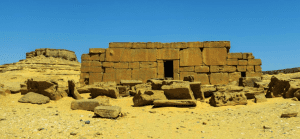El Fayoum
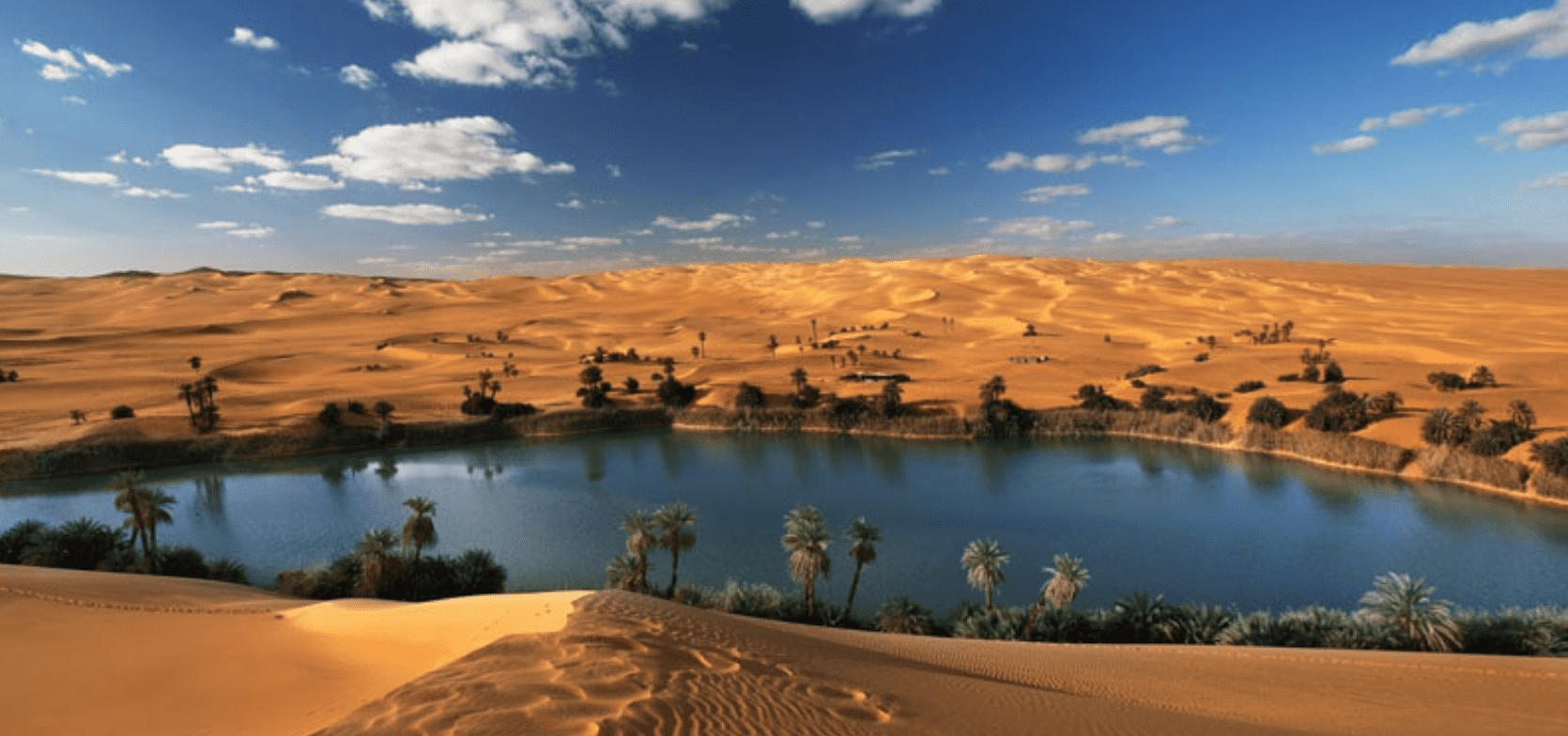
Updated On: February 01, 2024 by Dina Essawy
As we all know, Egypt contains many beautiful cities, and El Fayoum is one of these fascinating cities. It is located in a natural depression in Egypt’s western desert, about 103 km from Cairo and it has many attractions that draw in many tourists from inside or outside Egypt every year as it is characterized by the beauty of nature throughout the year. As you visit El Fayoum, you will see its lakes, the most important of which is Wadi El-Rayan Lake and the salt lake of Qarun, which is one of the oldest lakes in the world.
The city contains rural, coastal, and nomadic life, and there are many types of wildlife; because it differs in its land level. On the northern side, its level drops to 42 meters below sea level, and in the south, it drops about two meters below sea level, and the difference in the land level forces the water to force the water to rotate with the waterwheels and mills.
El Fayoum is the source of fish in Egypt, as it contains 90,000 acres of water that contain fish and you can find it in Lake Qarun and Wadi Al-Rayan. Also, the city is famous for its fertile lands that form muddy deposits from the flooding of the Nile River, and among the most important crops produced in the city are cotton, wheat, rice, and maize.
There, you will be able to see many civilizations embodied in one place, such as Pharaonic, Greek, Islamic, and Coptic. It is also a place for relaxation peace and pleasure due to its breathtaking landscapes, in addition to its monuments and unique cultural sites. Now let us take a tour of the beautiful places to visit in Al-Fayoum and what you can do there.
Table of Contents
Things to do in El Fayoum:
1. Wadi El Hitan National Park:
Wadi El Hitan is a natural oasis that is 40 million years old. It is located 150 miles southwest of Cairo and it is a UNESCO heritage site. The wadi contained the ancient Tethys Sea that was filled with sea cows, crocodiles, and turtles. In 2016, Wadi Al Hitan Fossil and Climate Change Museum opened its doors to visitors with interesting English and Arabic exhibits that describe the environmental changes in the area over time and how land-based mammals evolved to return to the sea. The interesting things in the museum are the skeletons that still retain small hind limbs not seen in modern whales. They are on display along a walking trail littered with invertebrate fossils and bones. In order to go there, you can ride a four-wheel car over the sand-blown road and enjoy the view of the desert and the dunes.
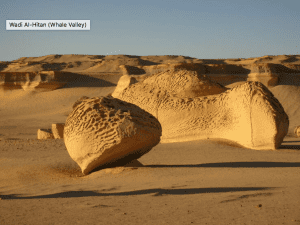
2. Wadi El Rayan:
It is one of the famous nature reserves in Egypt. It is about 75 km away from El Fayoum and was named after King El Rayan Ibn El Walid who had lived in the area with his army. Wadi El Rayan consists of seven parts which are the upper and lower lakes, El Rayan springs, El Rayan Falls, El Modawara Mountain, El Rayan Mountain, and Wadi El Hitan. This place is a magnificent part of Egypt, that you can spend a whole day in without getting bored and enjoy the landscapes there with your family and friends.
Also there, you will be able to see the wildlife in the area, where you can see white gazelles, Egyptian gazelles, sand foxes, fennec foxes, resident birds, migrant birds, and many species of eagles and falcons.
Another place in Wadi El Rayan that you can visit is Wadi El Rayan’s waterfalls. It is located 15 km away from the reserve’s gate and you can spend some time there and take beautiful pictures surrounded by nature.
About 5 km away from Wadi El Rayan is Jabal El Modawara, another beautiful place to visit, where you can climb up and enjoy the wonderful view from the top and if you are a bird lover, it will be a good place to spot them easily, especially eagles or falcons. Don’t forget to visit the Magic Lake, a beautiful place in Wadi El Rayan that is surrounded by dunes. It was called the Magic Lake as it changes its colors several times a day depending on the time of year and the amount of sunlight it receives and it is a great place for sandboarding and swimming.
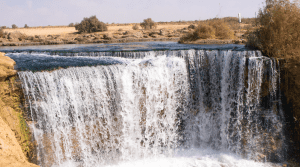
3. Qarun Reserve:
Qarun Reserve contains one of the largest natural lakes in Egypt and the world and it is also known as one of the deepest lakes as it is 14 meters deep. In the days of the Pharaohs, the lake was supplying the water of the Nile during the flood, and during the reign of Pharaoh Amenemhat III, he ordered the construction of a canal and two levees to store the water of the Nile in it during the flood. This was mentioned in the manuscripts of Herodotus on the ancient history of Egypt. The lake was used to store water for 6 months, and supply the lands with water.
There are about 88 species of birds inside the reserve such as the hook, the Abu Muallaqa, ducks, hawks, grouse, and flamingos, and also 17 types of wild plants, including zygote, sorrel, sage, and grouse. In the lake, there are also many species of fish like tilapia, musa, mullet, tobar, gilthead seabream, karumi, shrimp, eel, and catfish.
The reserve was announced as a natural reserve in 1989, and it also contains marine, river, and continental fossil deposits dating back about 40 million years. In the old days, the reserve had a big estuary that contained ancient elephants and the ancestors of the hippopotamus, as well as dolphins lived there. When you visit the reserve, you will see a lot of reptiles, amphibians, and mammals, which are of great importance in the ecosystem of the reserve. There are also historical monuments north of Lake Qarun representing the cultural heritage since the Roman and Pharaonic eras and also the Qarat al-Rasas area in the northeast of the lake, the churches area, and the Abu Lifa Monastery.
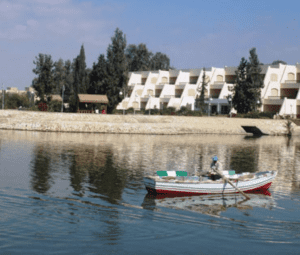
4. The Pyramid of Hawara:
The pyramid is located 9 km away from El Fayoum and this time you will visit a historical site not a natural one like most places in El Fayoum. The Pyramid of Hawara was built by King Amenemhat III, the pyramid was built by mud bricks clad in limestone and its height is 58 meters and its width is 105 meters. When you visit the pyramid, you will find a staircase from the entrance, 40 meters long down and ending with a small first room, from which a short corridor branch ends with a dead wall. In the surrounding area, there is the tomb of Princess Nefropetah, daughter of King Amenemhat III.
There are also the remains of the Lapernth Palace, which used to be the temple of Amenemhat III and it contained 12 roofed halls. The building is surrounded by a wall, with about 300 rooms, half of which are underground, containing the king’s tomb and the other half is above the ground. Only some traces of the columns of the upper floor remain, and the underground floor has not been excavated yet.
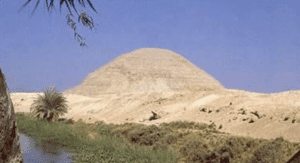
5. The Museum of Kom Aushim:
The museum is located in the city of Kranis. It was constructed in 1974 and it presents artifacts dating from the Prehistoric to Roman Periods. It was closed for 10 years since 2006 for restoration and repairs and it was reopened on November 3, 2016.
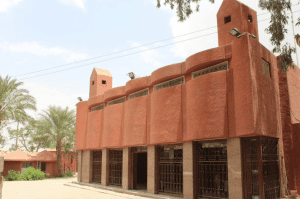
6. Mdinat Madi Temple:
It is located in an old historical site about 35 km from El Fayoum city. Madinat Madi Temple is considered one of the most important temples in Fayoum because you will find words that were dedicated to the triad Sobek, who is the crocodile god, on its walls.
The temple was built by Kings Amenemhat III and IV, in the Ptolemaic period many extensions have been set up to the northern and the southern sides of the temple. When you visit the temple, you will see the inner rooms made of dark sandstone, which is the oldest part of the temple and a rare model of a Middle Kingdom monumental construction. The middle sanctuary once featured a large statue of Renenutet, as Amenemhet III and IV stood on either side.
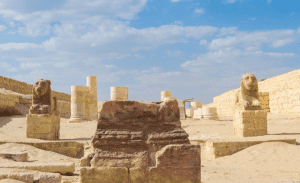
7. The Pyramid of Seila:
The pyramid is located in the North East of the city of El Fayoum. This pyramid is similar to many others in Egypt like the ones in Elephantine, Edfu, Hierakonpolis, Ombos, and Abydos, and most of these pyramids were tombs with a burial chamber as part of a large complex. Unlike other pyramids, Selia didn’t have an inner room but the center of the pyramid was damaged and it might be due to tomb robbers.
There are remains of brick and stone that held an offering altar and that means that there was an active cult here one day. Also in the pyramid, there are remains of inscriptions on a limestone stele and an offering table which confirms that the pyramid was built by Sneferu as his name is inscribed inside there.
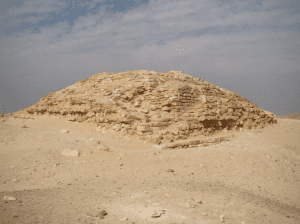
8. Dimeh al-Siba:
It is an old and interesting city which means the Island of the Crocodile god, located on the northern side of Lake Qaroun. It was a Ptolemaic city believed to be founded by Ptolemy II in the 3rd century BC. The ruins of Dimeh al-Siba contain two temples, and remains of houses, underground chambers, streets, and ten-meter high walls that are sometimes up to five meters thick.
The two temples that are located in this city were made with mud-brick walls. One of these temples was dedicated to Soknopaios, who was a form of the crocodile god Sobek.
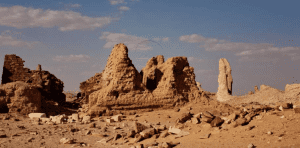
9. Obelisk of Senusret:
The Obelisk of Senusert is located in El Fayoum city, in a square known as the Obelisk Square and it was transferred from its original location at Abjij, the place of discovery, an agricultural village located three kilometers south of the city of Fayoum. Built during the reign of Senusert I, the Obelisk of Senusret looks different from other obelisks as it was built with a round top and not the usual shape of obelisks with pyramidal pointed tops, and the height of the obelisk is thirteen meters.
The reason for constructing the obelisk was to commemorate the transformation of the land of Fayoum into green agricultural lands when Senusret I made a huge project aimed at transforming the land of Fayoum from swamps covered with water into fertile dry land suitable for agriculture and it is known as Shaddt in the ancient Egyptian language which means reclaimed.
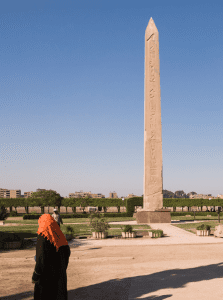
10. The Hanging Mosque:
The Hanging Mosque is one of the interesting places to visit in El Fayoum. It dates back to the early Ottoman era in 1560 and it was built by Prince Suleiman bin Hatim, governor of the provinces of Fayoum and Al-Bahsawiyah at that time. The reason for naming the mosque as such was because it was built on a high hill on the banks of the Sea of Youssef. The Hanging Mosque is similar in terms of planning and decoration to the mosques of the Mamluk period.
When you visit the mosque, you will see that it is located on the largest street in Fayoum city and the main entrance to the mosque is located at the northern end. The qibla portico consists of three rows of bow arches, each consisting of five similar tapered arches supported by four columns of red basalt, each with a cylindrical hull that rests directly on the ground without a base, and ends higher with a Corinthian crown. The minbar of the mosque is wooden consisting of a rectangular wooden base and crowned with a rectangular opening, to which it is closed by wooden slats on two sides. They are decorated with five fillings, three of which are square, and two are rectangular.
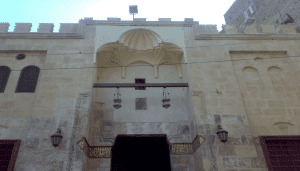
11. The Petrified Forest of Fayoum:
The forest is located north of Lake Qaroun in Gabal Qatrani. It is well known as the largest petrified forest in the world and it is home to 40-meter high trees that have survived for thousands of years. The forest is also remnants of a forest that grew 35 million years ago. It is now the location of an open-air museum, where you can find geological artifacts from millions of years ago like petrified trees, elephants, crocodiles, snakes, fossilized whales, and many other things.
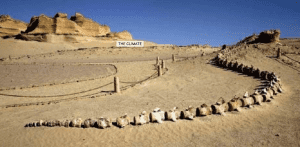
12. Qasr El Sagha Temple:
It is located in the desert north of Lake Qaroun and was uncovered in 1884 by the archaeologist Schweinfurth. It was built with huge blocks of local sandstone. There is a large passage opening onto seven roofed shrines in the northern wall and to the east, there is a small hallway that leads to a chamber the width of the temple. There was a tomb and a small settlement and stone tools that were discovered there as well.
Undoubtedly, Fayoum is one of the most unique cities in Egypt with its abundance of activities and attractions to see and explore, from ancient monuments to modern-day excursions, you will enjoy your time there, to say the least.
